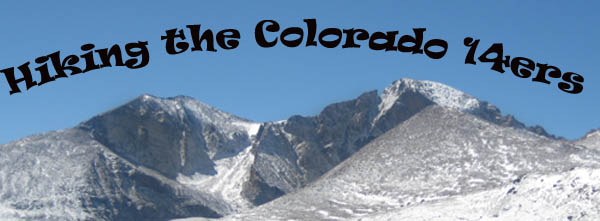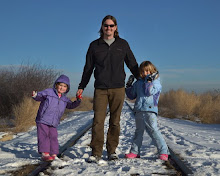
There is much discussion about how much elevation gain is necessary to actually claim you have climbed a peak. The most widely accepted and discussed rule is the 3,000 foot rule. Using the 3,000 foot rule, a climber must gain over 3,000 feet of elevation to have climbed the peak.
This is another one of those arbitrary rules that doesn't have much merit. Some say that 3,000 feet is just a nice round number. One popular guide book explains that in Colorado tree line is typically about 3,000 feet below the summit of the 14ers. That is an interesting thought, but actual tree line varies in different parts of the state and is typically closer to 12,000 feet.
The main problem with the 3,000 foot rule is that every peak is different and access by road makes certain trail heads the logical place to start climbing. For example, Guanella Pass is the most logically place to start when climbing Mount Bierstadt, However, that does not provide for a 3,000 foot gain.
I do agree that you can't 'count' Mount Evans if you drive up to the parking lot and scramble up the last 100 feet. I also think having a car on top of Evans to take you down cancels your ability to claim that you climbed the mountain.
If you decide to follow the 3K foot rule you would have to start many hikes from farther down the road. If you are a purest that is fine and I understand the desire to meet the required elevation gain, but to me it seems silly to walk down a perfectly good road just to add the extra gain.
I believe that mountain climbing is a very personal sport and each person can decide for themselves how much climbing is necessary. I use the 3K foot rule as a guidance but don't follow it if it doesn't seem to apply to the particular mountain. You do what you feel comfortable with.
This is another one of those arbitrary rules that doesn't have much merit. Some say that 3,000 feet is just a nice round number. One popular guide book explains that in Colorado tree line is typically about 3,000 feet below the summit of the 14ers. That is an interesting thought, but actual tree line varies in different parts of the state and is typically closer to 12,000 feet.
The main problem with the 3,000 foot rule is that every peak is different and access by road makes certain trail heads the logical place to start climbing. For example, Guanella Pass is the most logically place to start when climbing Mount Bierstadt, However, that does not provide for a 3,000 foot gain.
I do agree that you can't 'count' Mount Evans if you drive up to the parking lot and scramble up the last 100 feet. I also think having a car on top of Evans to take you down cancels your ability to claim that you climbed the mountain.
If you decide to follow the 3K foot rule you would have to start many hikes from farther down the road. If you are a purest that is fine and I understand the desire to meet the required elevation gain, but to me it seems silly to walk down a perfectly good road just to add the extra gain.
I believe that mountain climbing is a very personal sport and each person can decide for themselves how much climbing is necessary. I use the 3K foot rule as a guidance but don't follow it if it doesn't seem to apply to the particular mountain. You do what you feel comfortable with.


